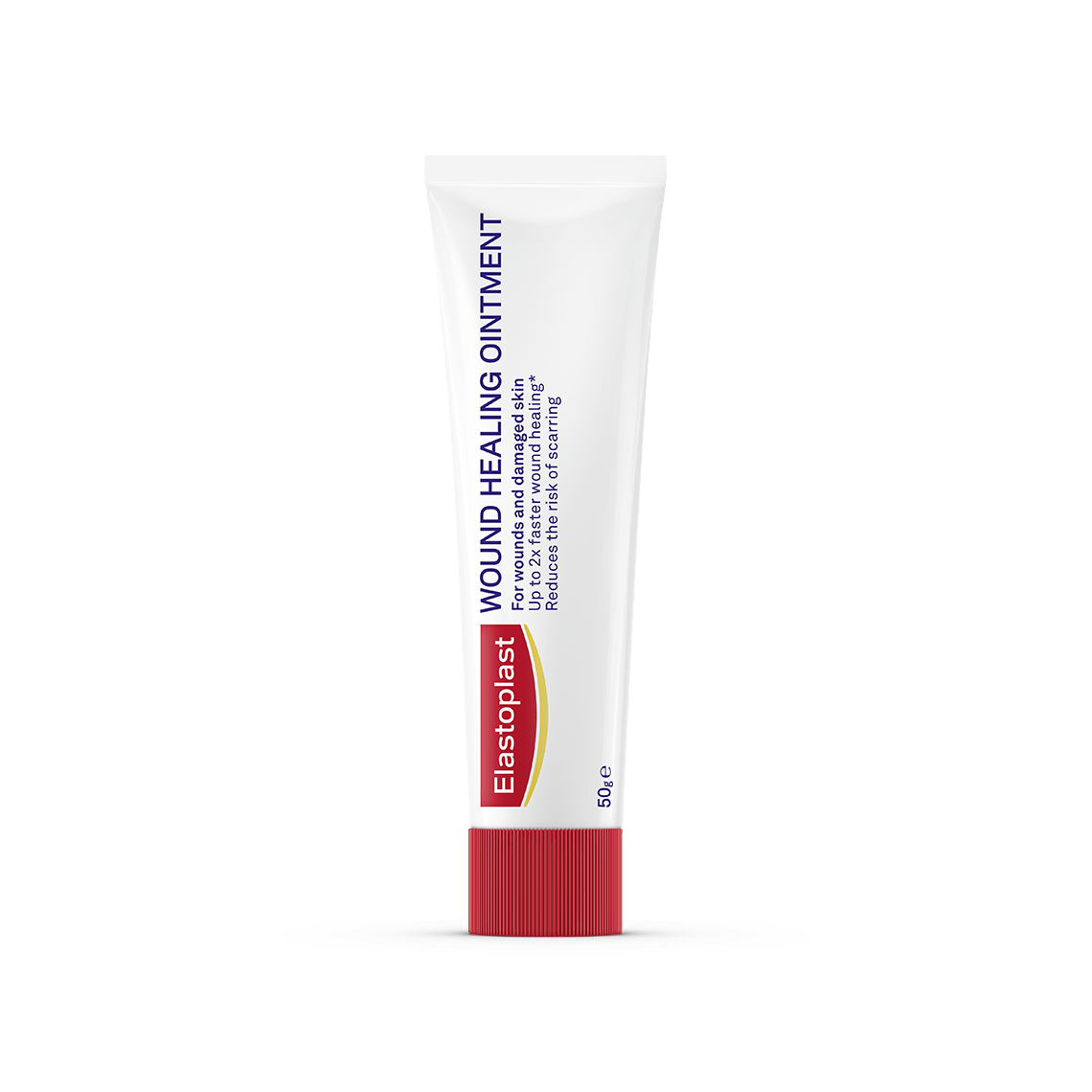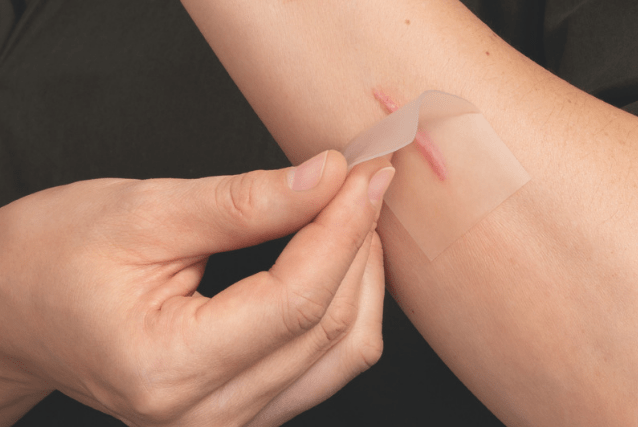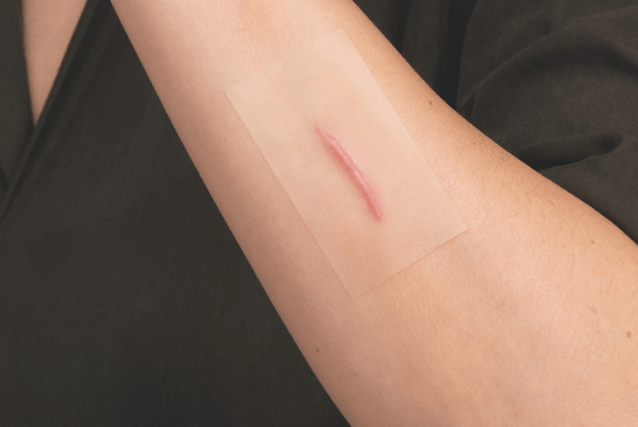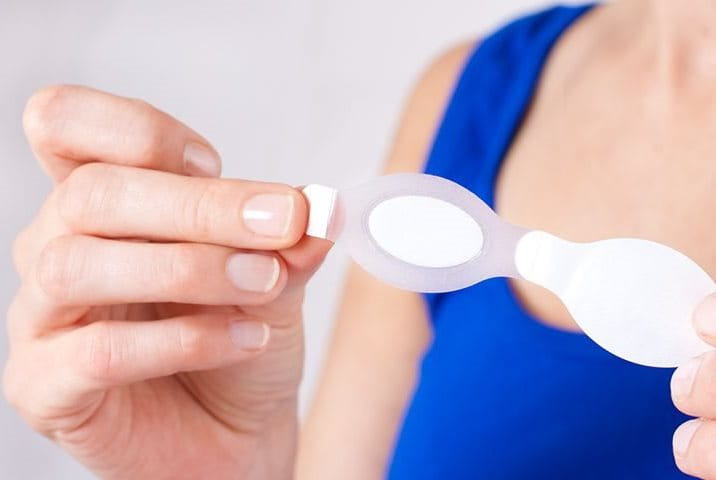
A hypertrophic scar is a result of an abnormal response to an injury or skin trauma. Scar tissue forms as wounds heal, which usually becomes flat and pale.
Hypertrophic scars appear red and raised, sometimes remaining like this for several years. They are characterised by an excess of collagen which is caused by a dysregulated healing process.
Risk factors of hypertrophic scars
Wounds from burns are more likely to result in hypertrophic scarring, especially more severe cases of burning. Other risk factors include:
- General inflammation
- Infection
- Genetics and history of hypertrophic scarring
- Issues with wound healing
How are hypertrophic scars diagnosed?
To diagnose a hypertrophic scar, you will want to visit your doctor for a clinical analysis. They will look at the features of the scar based on clinical history and in cases of uncertainty may need to take a skin biopsy.
Clinical features of hypertrophic scars

Hypertrophic scars aren't life-threatening or contagious, but they can cause cosmetic or body confidence issues. Here are some common symptoms:
- slight itching where the scar meets normal skin
- some pain in the centre
- restricted movement as the skin is no longer as flexible
- eventually becoming paler and flatter
- gradually flattening out over time
Hypertrophic scar vs keloid scarring
Like keloids, hypertrophic scars develop as a result of excess collagen being produced at the site of a wound, although more collagen is produced for keloid scars. Whereas keloid scars extend beyond the boundary of the original wound, hypertrophic scars do not, and tend to be easier to treat.
In general, hypertrophic scars are rarely more than four milimetres above the skin, tend to be pink or red and can grow anywhere on the body. In comparison, keloids can raise to more than four millimetres and can be red, purple or darker than surrounding skin. These are usually located on the shoulders, upper chest, cheeks or earlobes (especially after piercings).
What causes hypertrophic scars?
As mentioned, hypertrophic scars are the result of an imbalance of collagen at the site of a wound.
They also tend to develop after piercings, cuts or sometimes acne and chickenpox.
While they affect men and women from any racial group equally, those aged between 10 and 30 are more at risk. It is believed that the elasticity in younger skin leads to a higher production of collagen.
Wounds from burns are more likely to result in hypertrophic scarring, especially more severe cases of burning. Other risk factors include:
- General inflammation
- Infection
- Genetics and history of hypertrophic scarring
- Issues with wound healing
How are hypertrophic scars diagnosed?
To diagnose a hypertrophic scar, you will want to visit your doctor for a clinical analysis. They will look at the features of the scar based on clinical history and in cases of uncertainty may need to take a skin biopsy.
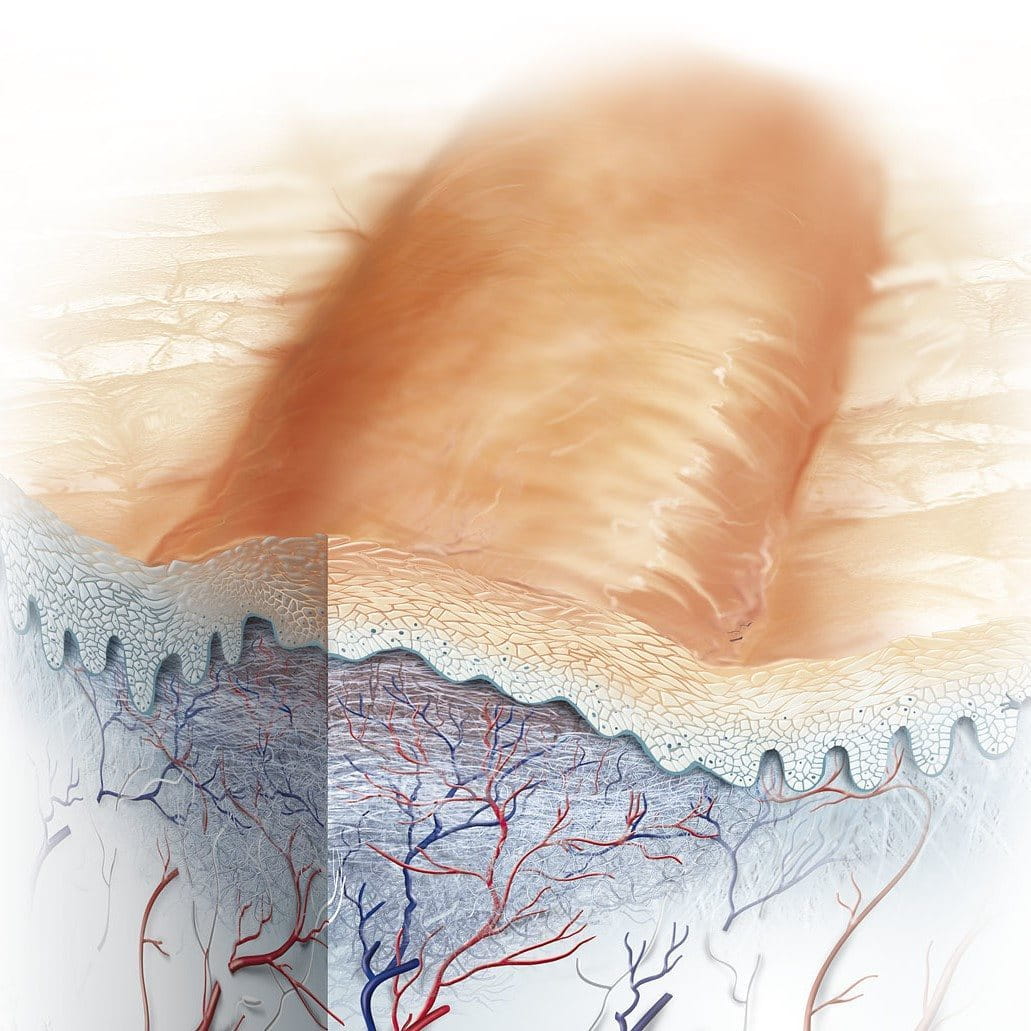
Hypertrophic scars aren't life-threatening or contagious, but they can cause cosmetic or body confidence issues. Here are some common symptoms:
- Slight itching where the scar meets normal skin
- Some pain in the centre
- Restricted movement as the skin is no longer as flexible
- Eventually becoming paler and flatter
- Gradually flattening out over time
How to reduce the risk of scarring
How to reduce the risk of hypertrophic scarring
Scars are formed in the last phase of wound healing, and the scar's appearance will depend on how successfully the wound has healed. In order to reduce the risk of unsightly scars and ensure a safe and fast healing, it is recommended to follow some basic wound care principles:
- Wound cleansing: As infections may increase the risk of abnormal scarring, always make sure that the wound is properly cleansed from particles, dirt and bacteria. Use the Elastoplast Wound Spray to cleanse the wound fast and easily.
- Wound protection: Make sure the wound is covered with an appropriate plaster or sterile wound dressing from Elastoplast. This will protect the wound from germs and bacteria which might enter the wound, delay wound healing and possibly cause wound infection.
- Moist wound healing: To reduce the risk of scarring and support a faster wound healing, experts recommend moist healing conditions. Apply the Elastoplast Wound Healing Ointment to create optimal healing conditions and support a fast wound healing with reduced risk of scarring.
Tips to prevent scars from forming
Tips to prevent scars from forming:
- Protect wounds and newly formed scars from the sun rays.
- Do not expose wounds and newly formed scars to extreme temperatures.
- Avoid exercises or activities that cause tension to the scar tissue.
- Only have stitches removed when suitable, because taking them out too early or delaying the process can interfere with wound healing.
- Avoid deliberate cuts or breaks in the skin like tattoos or piercings, especially on the earlobes.
How to flatten hypertrophic scars

For scar treatment, use Elastoplast Scar Reducer Patches to reduce the visibility of raised and coloured scars, while making them flatter, softer and lighter. These discreet, transparent scar reducer patches are made of flexible and breathable material.
These discreet, transparent scar reducer patches are made of flexible and breathable material. They are a safe and efficient way to effectively reduce raised and coloured hypertrophic scars, with first results noticeable after three or four weeks.
Hypertrophic scar treatment
There are several treatment options available for hypertrophic scar removal. These scars tend to be easier to treat than keloids.
- Corticosteroid injections: regarded as the most effective treatment for hypertrophic scars. Injecting a steroid into the scar every six weeks can help to soften the scar and flatten its appearance. This has around a 50% success rate and can only be performed a certain number of times, to avoid weakening the normal tissue surrounding the scar.
- Surgery: is not usually required, because hypertrophic scars tend to increase in size for the first three to six months before starting to regress. However, if the scar is causing excessive tension or impeding movement it can be excised.
- Laser therapy: uses high beams of light to resurface the scar and reduce the red or pink pigments. However, this does not make the scar any smaller and there's a risk this can increase scarring. This is more effective in newly formed scars than in older scars.
- Cryosurgery: involves freezing early scars with liquid nitrogen to prevent them from growing, is another effective hypertrophic scar treatment. Other prevent treatment options include silicone gel, pressure dressings, emollients, corticosteroid injections, oral or topical tranilast (to inhibit collagen synthesis) and skin needling.
Speak to your doctor if a hypertrophic scar is causing you discomfort.
Do all hypertrophic scars need to be treated?
Most hypertrophic scars won’t require treatment. It is usually a personal preference whether the cosmetic appearance is an issue, and the patient chooses to treat it. In cases where the scar forms over a joint, one might choose to treat it so they can regain uninhibited mobility.
Can hypertrophic scars lead to complications?
Hypertrophic scars are not dangerous though may cause pain or itching. Peoples main concern is usually to do with their appearance; however, this can improve between 1-2 years after the injury. They can also obstruct movement depending on where they form which may also justify treatment.
Hypertrophic scars caused by burns

Hypertrophic scarring following burn incidents form thicker scars which are raised and red/purple in colour. They might fade slower and cause itching or pain around the wound similar to other hypertrophic scarring.
Hypertrophic scars cannot become cancerous and are not dangerous. However sometimes hypertrophic scarring can hide cancer so if you are unsure, it is always advisable to get it checked. Cancer can develop in scar tissue following accidents or severe burn injuries, so keep monitoring the site and ensure you are advised by a doctor if you are concerned.

.png?rx=0&ry=73&rw=1470&rh=323&hash=B894A53DC66F03A35491BB02EDDA16E4)
